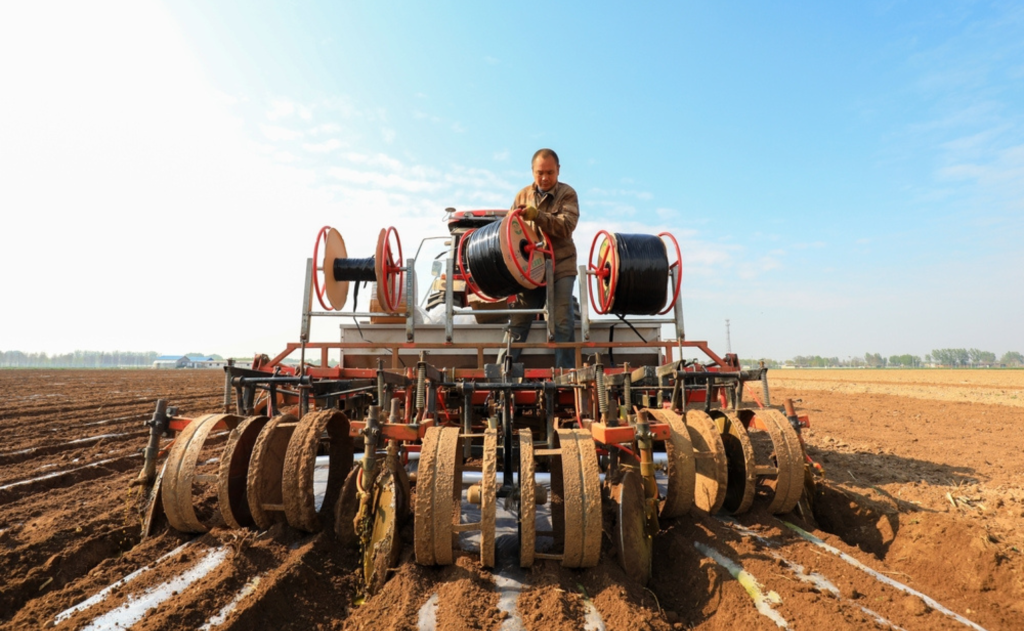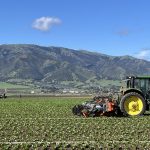Imagine transforming a patch of land into a thriving, productive farm, all with the help of modern machinery. How would you like to boost your agricultural output while saving time and reducing labor costs?
Setting up an efficient mechanized farm can be your ticket to achieving these goals. This isn’t just about buying the latest gadgets; it’s about understanding how to integrate technology seamlessly into your farming practices. By reading further, you’ll discover practical steps to streamline your operations, increase efficiency, and ultimately, improve your farm’s profitability.
Dive into this guide and unlock the secrets to revolutionizing your farming experience. Your dream of a high-performing farm is just a few strategies away.

Site Selection And Layout
Choosing the right site and layout for your mechanized farm is crucial to your success. It’s like picking the perfect location for your home; it affects everything from productivity to profitability. You want a place that maximizes efficiency and supports your farm’s specific needs. Let’s dive into how you can make informed decisions that set you up for success.
Evaluate Soil Quality
Start with soil testing. Good soil is the backbone of any farm. Check its nutrient levels, pH, and drainage capabilities. You want soil that supports the crops you plan to grow. If you’ve ever tried to grow a garden in poor soil, you know it’s an uphill battle. Investing in soil analysis can save you time and money.
Consider Climate And Weather Patterns
Look into the climate of potential sites. Different crops thrive in different conditions. Will your choice of crops withstand the local weather? If you’ve experienced unexpected frost ruining a harvest, you understand the importance of this consideration. Choose a location where your crops can flourish.
Assess Accessibility And Infrastructure
Consider how easy it is to reach your farm. Accessibility affects everything from transportation costs to emergency situations. Ensure there’s infrastructure to support your operations, like roads and utilities. Have you ever faced delays because a road was impassable? Accessibility can make or break efficiency.
Plan Your Farm Layout
Design your farm layout with efficiency in mind. Arrange fields, roads, and buildings to minimize travel time and maximize productivity. Think of it as organizing a kitchen; you want everything within easy reach. The layout affects your daily operations, so plan carefully.
Account For Future Expansion
Leave room for growth. Your farm may expand over time, and planning for future needs is wise. Consider how new technologies might affect your layout. Remember a time when you wished you had more space for a new project? Anticipate growth to stay ahead.
What’s your priority when selecting a site for your farm? Is it soil quality, climate, or something else? Share your thoughts and experiences. Your insights could be the key to someone else’s success.
Choosing The Right Machinery
Choosing the right machinery is crucial for an efficient mechanized farm. The correct equipment ensures productivity and reduces labor costs. Farmers need to select machines that suit their specific needs. Not all machinery fits every farm. Consider the farm’s size, soil type, and crops. Each factor influences the type of machinery required.
Understanding Farm Needs
First, assess your farm’s requirements. Do you grow grains, vegetables, or fruits? Different crops need different machines. For instance, grain farms need combines. Vegetable farms might require planters or tillers. Choose machinery based on the main crops grown.
Consider Soil Type
Soil type impacts machinery choice. Sandy soil requires lighter equipment. Heavy clay soil might need robust machinery. Check the soil condition regularly. Adjust machinery choice based on changes in soil properties.
Evaluate Farm Size
Small farms can use compact machines. Large farms benefit from bigger, more powerful equipment. Machinery should match the farm’s acreage. A mismatch leads to inefficiency. Larger machines save time on extensive lands.
Budget And Cost
Set a budget for machinery. Compare prices from different suppliers. Quality machines might cost more initially. They save money in the long term. Invest wisely based on available funds.
Research Brands And Models
Investigate various brands and models. Some offer better durability and efficiency. Read reviews from other farmers. Attend farm machinery exhibitions. Talk to dealers and get expert opinions.
Check Maintenance Requirements
Consider how often machines need maintenance. Frequent repairs increase costs and downtime. Choose machines with easy maintenance procedures. Check availability of spare parts. Reliable machinery ensures continuous operation.
Integrating Technology And Automation
Setting up an efficient mechanized farm involves combining technology with automation for optimal productivity. Utilize advanced machinery to streamline planting, cultivating, and harvesting processes. Implement smart systems to monitor soil health and irrigation, ensuring sustainable and high-yield operations.
Integrating technology and automation into farming can turn a simple plot of land into an efficient powerhouse. As you embark on this journey, embracing modern tools can elevate your farm’s productivity and sustainability. From automated machinery to data-driven insights, technology makes it possible to achieve more with less effort. Let’s delve into how you can seamlessly integrate these advancements into your mechanized farm setup. ###Embracing Precision Agriculture
Precision agriculture uses technology to optimize field-level management regarding crop farming. By using GPS and IoT devices, you can monitor soil conditions, crop health, and even predict harvest times accurately. Consider using drones equipped with cameras to survey your fields. These images help you identify problem areas that need attention. Such precision ensures that every decision you make is backed by data. ###Investing In Smart Machinery
Smart tractors and harvesters are game-changers. These machines operate with minimal human intervention, saving you time and reducing labor costs. They come with sensors and GPS, ensuring that each task is performed with accuracy. Imagine the convenience of a tractor that can plow your fields while you manage other tasks. By investing in this technology, you free up your time, allowing you to focus on strategic planning and growth. ###Implementing Automated Irrigation Systems
Water management is crucial for any farm. Automated irrigation systems ensure that your crops receive the right amount of water at the right time. These systems use weather data to adjust watering schedules, optimizing water usage. This technology reduces water waste and ensures that your plants are healthy. It’s a smart way to maintain a balance between resource conservation and crop productivity. ###Utilizing Farm Management Software
Farm management software is your farm’s command center. It consolidates all your farm data into one place, making it easier to track progress and make informed decisions. With this software, you can plan planting schedules, manage inventory, and even track machinery maintenance. It’s like having a virtual assistant that ensures everything runs smoothly. ###Exploring Robotics For Farm Tasks
Robots in farming might sound futuristic, but they’re here to stay. Robotics can handle repetitive tasks like planting, weeding, and even harvesting, allowing you to focus on other crucial areas. Have you thought about what you could accomplish if robots took over mundane tasks? This technology not only boosts efficiency but also helps in dealing with labor shortages. Integrating technology and automation isn’t about replacing traditional farming methods; it’s about enhancing them. As you implement these tools, remember to start small and scale gradually. By doing so, you can ensure that each investment is worthwhile and contributes to your farm’s overall success.
Sustainable Practices And Maintenance
Setting up a mechanized farm involves modern techniques for increased productivity. A key part is implementing sustainable practices. These practices ensure long-term success and environmental balance. Proper maintenance of machinery and land is crucial. It prevents breakdowns and optimizes farm output.
Soil Health Management
Healthy soil is the foundation of a successful farm. Regular soil testing identifies nutrient needs. This helps in applying the right fertilizers. Organic matter, like compost, can improve soil structure. Crop rotation prevents soil depletion. It maintains nutrient levels naturally.
Water Conservation Techniques
Water is a precious resource in farming. Drip irrigation systems use water efficiently. They deliver water directly to plant roots. Rainwater harvesting collects and stores rainwater. This reduces dependence on groundwater. Mulching keeps soil moisture intact.
Energy-efficient Machinery
Using energy-efficient machinery reduces costs. It minimizes the carbon footprint. Regular servicing keeps machines in top condition. Proper lubrication and timely repairs prevent wear and tear. Consider solar-powered equipment for sustainable energy use.
Integrated Pest Management
Pests can damage crops significantly. Integrated Pest Management (IPM) uses various strategies. Biological control involves natural predators. Regular monitoring helps identify pest levels. Rotate pesticides to prevent resistance. Use traps and barriers for physical control.
Biodiversity Enhancement
Biodiversity supports a balanced farm ecosystem. Plant diverse crops to attract beneficial insects. Maintain hedgerows and grassy strips for wildlife. These areas provide habitats for pollinators. Encourage bird nesting to control pests naturally. Biodiversity fosters resilience against climate change.
Regular Equipment Maintenance
Well-maintained equipment runs efficiently. Create a maintenance schedule for all machinery. Inspect equipment before and after use. Replace worn-out parts promptly. Clean machines to prevent rust and damage. Proper storage extends machinery lifespan.

Conclusion
Building a mechanized farm needs careful planning. Start small. Learn as you go. Use machines that fit your budget. Focus on efficiency. Make sure to maintain your equipment. Regular checks keep things running smoothly. Train your team well. Skilled workers boost productivity.
Stay updated with farming trends. Technology evolves rapidly. Balance tech with sustainability. Protect the environment while farming. Share experiences with fellow farmers. Networking helps solve common problems. Remember, every farm is unique. Tailor strategies to your needs. With dedication, your farm will thrive.


